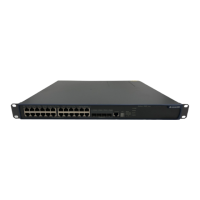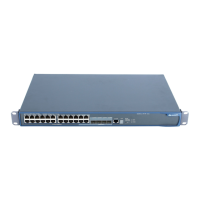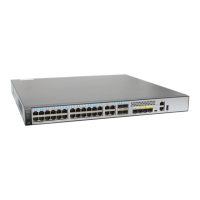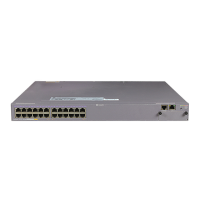Operation Manual – Routing Protocol
Quidway S5600 Series Ethernet Switches-Release 1510 Chapter 4 OSPF Configuration
Huawei Technologies Proprietary
4-7
II. DD packet:
When two routers synchronize their databases, they use database description (DD)
packets to describe their own LSDBs, including the digest of each LSA. The digest
refers to the HEAD of an LSA which uniquely identifies the LSA. This reduces the size
of traffic transmitted between the routers because the HEAD of an LSA only occupies a
small portion of the LSA. With the HEAD, the peer router can judge whether it has the
LSA or not.
III. LSR packet:
After exchanging DD packets, the two routers know which LSAs of the peer router are
lacked in the local LSDB, and send link state request (LSR) packets requesting for the
lacked LSAs to the peer. These LSR packets contain the digest of the needed LSAs.
IV. LSU packet:
Link state update (LSU) packets are used to transmit the needed LSAs to the peer
router. An LSU packet is a collection of multiple LSAs (complete LSAs, not LSA digest).
V. LSAck packet
Link state acknowledgment (LSAck) packets are used to acknowledge received LSU
packets. An LSAck contains the HEAD(s) of LSA(s) to be acknowledged (one LSAck
packet can acknowledge multiple LSAs).
4.1.6 LSA Types
I. Five basic LSA types
As described in the preceding sections, LSAs are the primary source for OSPF to
calculate and maintain routes. RFC 2328 defines five types of LSAs:
z Router-LSA: Type-1 LSAs, generated by every router to describe the router's link
states and costs and advertised only in the area where the router resides.
z Network-LSA: Type-2 LSAs, generated by the DRs of broadcast or NBMA network
to describe the link states of the current network segment and are advertised only
in the area where the DRs reside.
z Summary-LSA: Type-3 and Type-4 LSAs, generated by ABRs and advertised in
the areas associated with the LSAs. Each Summary-LSA describes a route to a
destination in another area of the AS (also called inter-area route).Type-3
Summary-LSAs are for routes to networks (that is, their destinations are
segments), while Type-4 Summary-LSAs are for routes to ASBRs.
z AS-external-LSA: Type-5 LSA, also called ASE LSA, generated by ASBRs to
describe the routes to other ASs and advertised to the whole AS (excluding stub
areas). The default AS route can also be described by AS-external-LSAs.

